While 2020 saw many industries shuttered for months and others forced to limp along, the pandemic’s effect on production was but a blip on the radar of Utah-based Big-D Construction. The contractor never shut down its offices and kept all its projects moving forward. Work in some of Big-D’s sectors even accelerated due to increased demand, including food and beverage, deemed an essential business.
“Food and beverage is our wheelhouse,” says Forrest McNabb, president of Big-D’s Mountain West Group and the firm’s National Food and Beverage Group. The groups’ projects in 2020 included Tyson Foods’ new beef and pork processing facility, the ENR award-winning United States Cold Storage addition in Syracuse and the Oatly alternative milk production plant in Ogden.
“2020 was a record year for us because of the niche markets we’re in,” McNabb says.
Founded by carpenter (Big) Dee Livingood in 1967, Big-D has grown to 1,500 employees (1,700-1,800 pre-pandemic) across eight regional offices, generating more than $1 billion in annual revenue. The contractor was recently named one of ENR’s Top 100 Contractors in the nation and has been an ENR Top 400 Contractor for 27 consecutive years.
“Big-D did an incredible job jumping on the [COVID] protocols immediately, and this helped us weather it really well,” says Mike Kerby, president, Big-D Signature, the firm’s mountain resorts group. “Our people are our number one priority.”
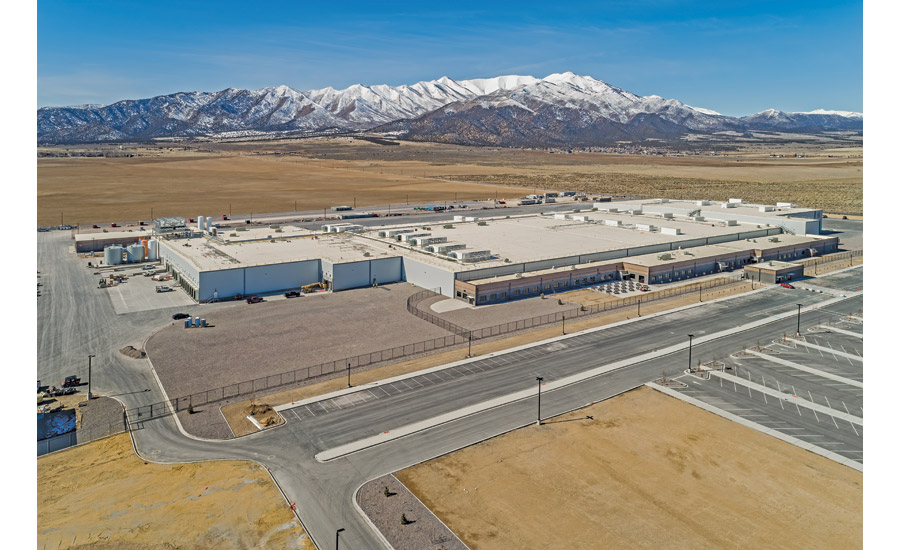
Work on Tyson Foods’ Eagle Mountain beef and pork processing plant was completed during the pandemic.
Photos by Alan Blakely
Planning and Protocols
During the pandemic, Big-D leadership created a campaign called “Respect & Protect,” which enacted additional safety protocols supported by signage at its jobsites and offices. The company held monthly virtual town hall meetings, presented by President Cory Moore, to address questions, challenges and goals for working remotely and on evolving jobsites.
“We went from monthly board meetings to weekly leadership meetings with every office on a call regarding what we were doing across the country to ensure the safety of our people and subs,” says McNabb. “We didn’t miss a beat. Our offices stayed at full capacity other than a few people who chose to work from home. We trusted our people to make the best decisions; we’re about results, not micromanagement.”
And while the contractor isn’t bulletproof, “we came through relatively unscathed,” McNabb says. “Now that the dust has settled, it is amazing to see what everyone was able to accomplish [with] constant coaching, training, education.”
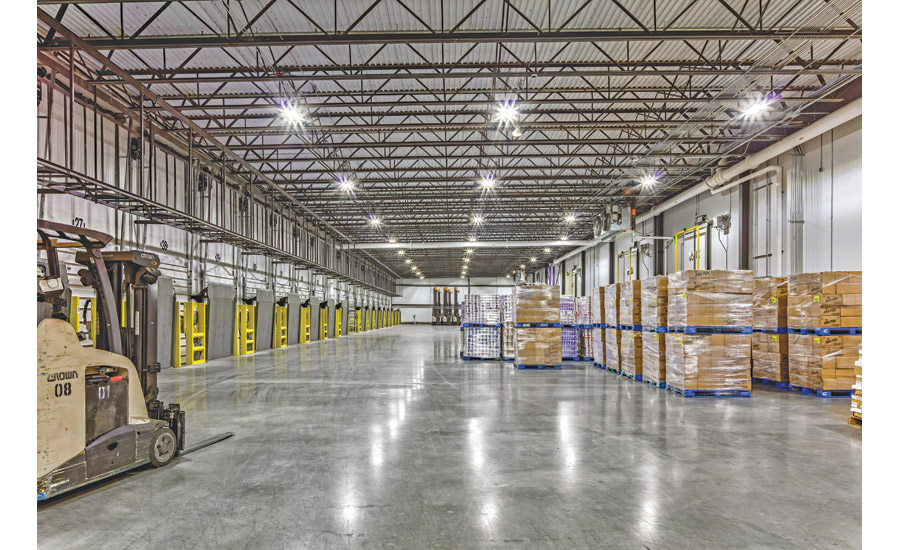
The United States Cold Storage facility addition in Syracuse, Utah, has earned Big-D a 2021 ENR Regional Best Projects award. The addition added approximately 150,000 sq ft of freezer space and 24,000 sq ft of cold dock.
Photos by Alan Blakely
High-Profile Work
“The interesting thing about the pandemic is that while our initial concern was how to keep people safe and still working, no one [predicted] the aftershocks of supply chain issues and labor shortages we’re seeing now,” says Trevor Hunsaker, who leads the firm’s Utah County office.
“There is no one that isn’t being hit by that in the entire sector. In fact, it’s probably rougher today with the fallout than it was in the midst of the pandemic; we could control keeping people safe, but we can’t control lead times on materials,” he says.
“2020 was a record year for us because of the niche markets we’re in.”
—Forrest McNabb, President, Mountain West Group, Big-D Construction
Ninety percent of Big-D’s projects are repeat relationships, and McNabb says the firm’s approach to growth is “to not lose any existing customers and to pick up a few new ones each year.”
The contractor was a joint-venture partner with Holder Construction in the recently completed Salt Lake City International Airport Redevelopment. Other recent notable projects include the Lodge at Blue Sky in Park City and the Park Avenue Development in Salt Lake City.
Big-D is also involved in several large multifamily projects around the state, including the $149-million Post House Apartments, the residential component of the high-profile Post District, a 13-acre site spanning one-and-a-half city blocks in downtown Salt Lake City.
“Multifamily projects in Utah had always been 140-160 units with a little parking, but now we’re seeing these very sophisticated and complex projects,” says Rich Hazel, Big-D’s Salt Lake regional president.
In addition to the Lodge at Blue Sky, Big-D’s mountain resorts group also recently completed the $65-million Kings Crown luxury ski-in, ski-out development in Park City and the residences at the Tower Club at Empire Pass, Park City, a $45-milllion, four-story condo project.
“Park City has exploded over the past 10 years,” Hazel says. “While it was kind of quiet before, we are now building world-class, high-level facilities in size and complexity. We’re a very sophisticated builder and Mike [Kerby] is at the right place at the right time to deliver that. A small job today is $50 million; it is no longer quiet.”
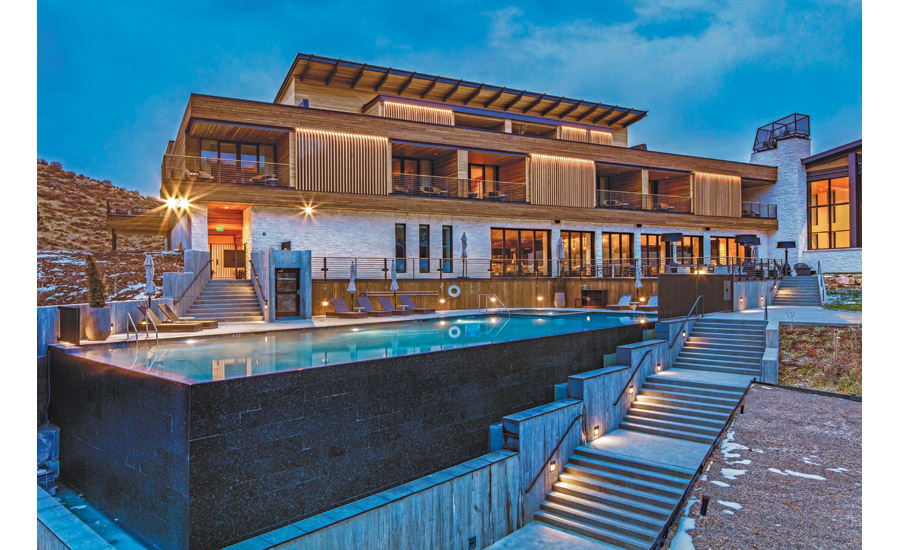
The 386,000-sq-ft Blue Sky Lodge luxury retreat is situated on a 35-acre private ranch in Park City. The resort sits on the side of a mountain and incorporates a color palette and materials that complement the area’s setting and historic legacy.
Image by Alan Blakely
Team Training
Hazel says that while the model for landing projects used to entail the construction owner procuring the job, shaking hands and then divvying the work up between the team, those decisions today are made based on the project owner’s comfort level with the project team.
“The customers no longer want to meet the boss; they want to meet the team and to do repeat work with that team,” says Hazel. “The projects are more sophisticated, and the owners are too. Everything today is of a higher level.”
As a result, Hazel says he spends much of his time recruiting and training teams. “If we have the right teams and the right people and the culture is set, the work comes. It’s a very different business model that any of us have ever had in our careers.”
“We work as a team and back each other up,” Kerby adds. “It doesn’t make sense for one project team to succeed and another to fail. This [culture of teamwork] creates a unique bond, and employees of Big-D feel they’re part of something different.”
Big-D is also training its own labor force through a series of courses called Big-D University, which includes a required three-day course for all new employees that teaches essential skills for their jobs.
Additionally, Big-D added an apprenticeship course, which became accredited with the NCCER in early 2020. It includes classes in plan reading, vertical and horizontal forms, flatwork and more. The course is a mix of classroom instruction, online learning with written assignments and practical field sessions.
Big-D Construction has also stayed at the industry forefront when it comes to the use of cutting-edge technology. The firm’s in-house virtual design and construction department is involved for the entire life cycle of a project, and this technology has helped the firm complete more than 170 projects utilizing VDC and BIM in the past few years.
“They are fantastic working as a team with us to solve problems, and we really appreciate each other and how we operate,” says George Arnold, a partner at Hamilton Partners. Big-D recently constructed two large industrial projects for Hamilton: the I-215 Commerce Center in Salt Lake City and Lake Park Commerce Center in the West Valley.
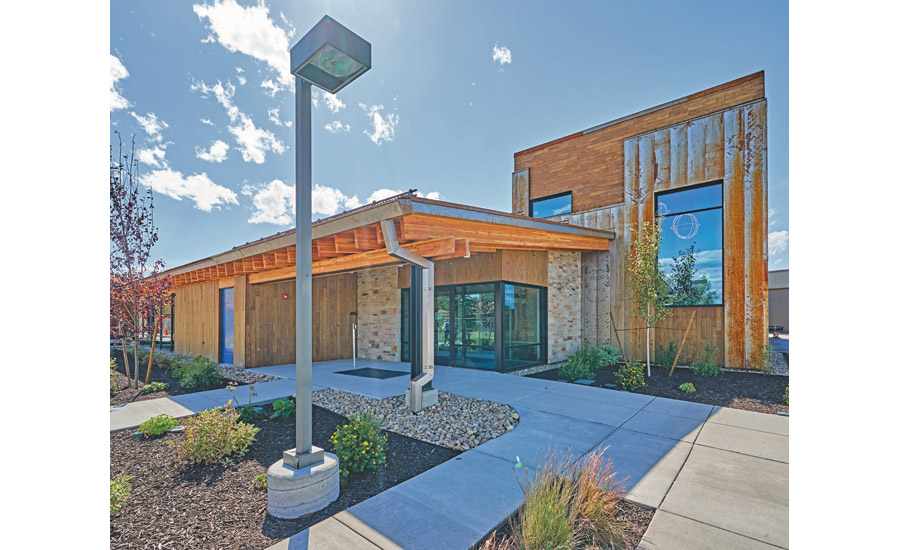
Big-D led work on the National Ability Center’s Equestrian Center expansion in Park City.
Photo courtesy of Big-D Construction
Early into the pandemic, as everyone was scrambling to develop safety protocols and address the unknowns, an earthquake hit five miles from the Lake Park Commerce Center. “Nothing fell, but we had a lot of heartburn over the status of the panels and the integrity of the structure,” Arnold says. “It was scary, and Big-D solved a lot of problems to ensure the integrity of the building and was able to keep the job going. We worked through these issues together, remotely. We trust them implicitly that the decisions they make are for the good of the greater project.”
“We have enough processes and systems that we try not to make any mistake twice,” Hazel says. “We try to be an evolving organization, and we’re very much a corporate business now where cash flow, finance and contracts have taken us to another level. We’re no longer ‘get some work, get some guys, get this done.’”
“Moving forward, we’re just going to sharpen the saw every day and get a little better at what we do,” McNabb says. “And we’ll continue to be honest and transparent with our customers.”



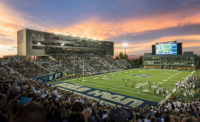
Post a comment to this article
Report Abusive Comment